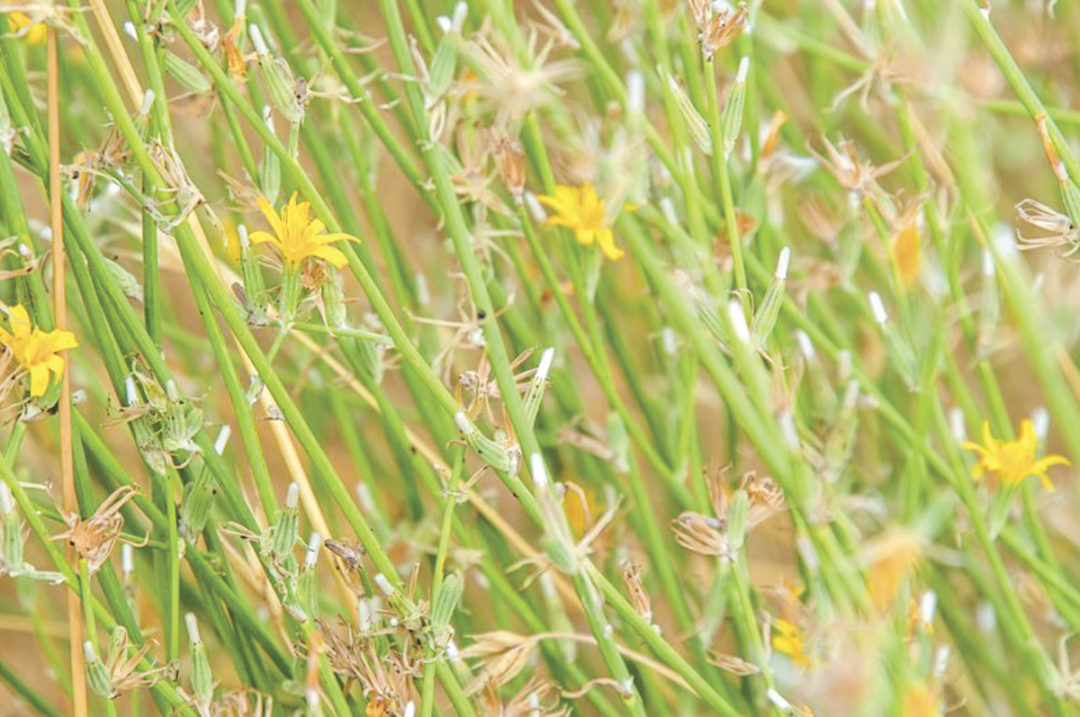Rush skeletonweed (Chondrilla juncea L.) is a perennial plant that has infested several million acres in Idaho. Originally found in the early '80s as a 5-acre patch near Horseshoe Bend, it has grown to over 1 million acres in only 20 years. Noticeable, leaves are found as rosettes, which are sharply toothed like others in the asteraceae family. Stem leaves are very small, inconspicuous and narrow, giving the plant the look of having no leaves or being “skeletal” in appearance. Flowering heads are found scattered on the branches, approximately 3/4-inch in diameter. This plant resembles an alfalfa plant after a migration of grasshoppers has stripped all the leaves off. To tell the difference, look at the base of the stems. If the stem has small red hairs on the lower 3 to 4 inches, where other plants do not, it will be this noxious weed. One can also look for the milky latex that is produced if the stem is broken. This plant has no nutritional value for grazing animals and often displaces elk and deer from their natural habitat. The dandelion-like seeds float in the air for miles and miles.
Control and management options
This plant has a deep root system making mechanical control ineffective due to other parts of the plant not being destroyed. Hand-harvesting the plants prior to seeding will keep the seeds from spreading, but the plant will emerge the next year due to the deep root system left in the ground. Herbicide control is the best method to manage infestations of rush skeletonweed. Products such as Milestone, Opensight, Transline or Tordon 22K are most effective when used in the fall or early spring. Once the plant has bolted, the basal rosettes recede, giving very little leaf surface to allow the pesticide to get into the plant.
For more information on rush skeletonweed and Idaho’s other listed noxious weeds, go to the Idaho Weed Awareness Campaign website.








